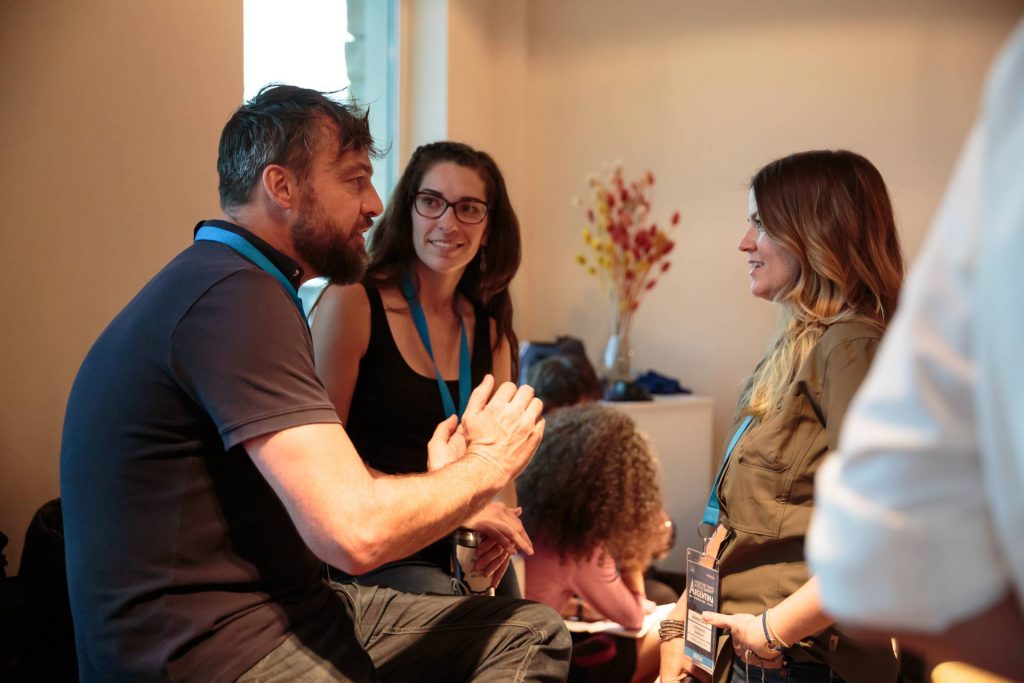The desire to preserve and protect natural spaces and local cultures is contagious among adventure travel professionals. On the second day of the Adventure Travel World Summit, a buzz of enthusiasm and drive to act was palpable during educational sessions, in hallway conversations, and around lunch tables as delegates discussed complex questions related to tourism reflecting the day's theme of "Protect."

The good news is destinations don't have to choose between business growth and protecting local cultures and natural areas. Several case studies presented throughout the day, such as those outlined by Bruno Wendling and Edmund Morris in regard to Bonito and Pantanal, Mexico, and Jordan, respectively, proved time and time again that well-researched and thoughtful strategic planning can appropriately benefit local communities while boosting the bottom line. "People asked why we should invest in adventure travel rather than mainstream tourism," Morris said, but when data showed that 10 percent of tourist revenue stayed in the local community in a mass tourism area (the Dead Sea) versus 65 percent in an adventure travel area (the Jordan Trail), the value was clear.
Yes, adventure travel can positively impact local residents. Additionally, today's adventure travelers are seeking more experiential experiences. But that doesn't mean tour operators should parade them through local communities for a quick photo at the expense of those who live there. "'Meeting' means getting to know each other. But 'meeting' is not the same as 'having brief contact with,'" said Ana Ines Figueroa, owner and managing director of Adventure & Landscape, during "Community Tourism Partnerships: Evolution of Adventure Product and Marketing."
In addition to considering how travel impacts people, the adventure travel industry has worked hard to implement sustainable environmental practices, a topic explored extensively in the opening plenary address "Innovative Protectors, Scaling Conservation" and educational session "Balancing Business and Conservation in National Parks and Protected Areas." In all sessions, delegates were invited to think critically about their role as a single person in the big picture. "The onus is on all of us here today to make sustainable travel more mainstream," said James Thornton, managing director and chief executive of Intrepid Group.
If one thing came out of the day's conversations it is this: There are no easy answers when it comes to finding that delicate balance among traveler desires, government expectations, local needs and wishes, and protecting a planet we all live on and enjoy exploring. "We need to be aligning all the stakeholders. We need to be more pro-active in protecting and sharing these spaces," said Rosa Costa, business development director of Futurismo Azores Adventures.
Speakers throughout the day advised delegates to think wisely about marketing messages and images, especially as it relates to indigenous populations; listen closely to what local community members actually want and need; and truly consider what is for sale when selling eco- or sustainable tourism. "A partnership based on trust, respect, and mutual understanding is a partnership that will last," said Lennart Pittman, CEO/founder of Sápmi Nature Camp and an indigenous Sámi.
Preserving and protecting these places and cultures across the planet means travelers will be able to discover and explore new destinations for many years to come. For Summit delegates, we'll continue exploring in Tuscany, Italy - site of the 2018 Adventure Travel World Summit, which was a surprise announcement Wednesday evening. We look forward to seeing you there. Salute!
